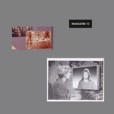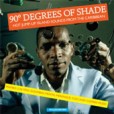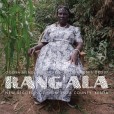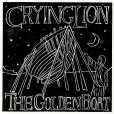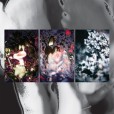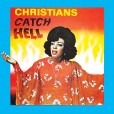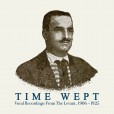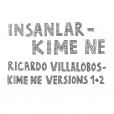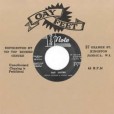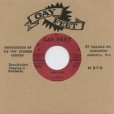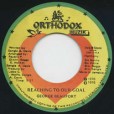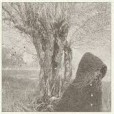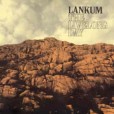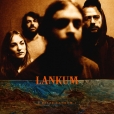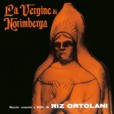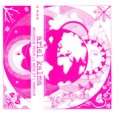Your basket is empty

Tasha and Channel One productions, newly corralled, with three stone exclusives. The highlights are an FJ duet with Michael Palmer retrieved from dubplate duties, and from the Riders a next version of Youthman Invasion and a trigger-happy Illegal Gun. Wonderful photos by Beth Lesser and Syphilia Morgenstierne.
Rang'ala
New Recordings From Siaya County, Kenya: Ogoya Nengo And The Dodo Women's Group
Honest Jon's Records
Open-hearted, fresh, lovely, bumptious recordings of women’s singing, from Rang’ala village in southwest Kenya. ‘Dodo’ is a type of traditional Luo music mostly used for entertainment at weddings, drinking parties and wrestling festivals. Songs in praise of the happy couple, the hardest drinkers and the best wrestlers.
Try the magical fourth song, Arum — about barking like a hornbill.
Refreshing, rootedly odd, mostly unaccompanied four-part-harmony singing recorded in Govan Old Parish Church, Glasgow, by members of Trembling Bells and Muldoon’s Picnic. Elements of Sacred Harp, Gregorian chant, medieval madrigal and English folk, with poetic influences including Maya Deren, Saint John The Divine and Dennis Potter — a unique blend of the visionary and the earthly, the intimate and glorious.
Silk-screened sleeve.
Utterly magnificent, sublimely soulful survey of the Gospel Roots label, subsidiary of the mighty TK Records at the height of the Miami Sound.
A&R was co-ordinated by Gospel legends Ira Tucker — from the Dixie Hummingbirds — and Ralph Bass, veteran producer with Savoy, King and Chess. The label was run by Timmy Thomas, who had recently smashed with Why Can’t We Live Together, for another TK spin-off, Glades. Operations were overseen by Henry Stone himself, unlikely King of Disco, who had recorded a young Ray Charles, and pushed forward James Brown. They drew in artists from all over the US, from St. Louis, Columbus, Memphis, Brooklyn, Cabrini Green in Chicago: unknowns like Camille Doughty, reluctant to jeopardise her job at GM (‘Generous Motors’) in Detroit, and huge-sellers like the revered Brooklyn All Stars, who started out on Peacock in 1958.
Choral belters, deep ballads, harmony quartets, epic city-blues, gritty funk, powerhouse female soul… Killer-diller Philly like a scorching version of Harold Melvin & The Blue Notes’ Wake Up Everybody; and Jean Austin’s raw Spirit Free, co-written by Ronnie Dyson, produced by Jesse James at Future Gold. Chicago Sound like The Fantastic Family Aires — named after the family’s furniture store on North Cicero, but reminiscent of the Staple Singers at their best — through to the full-blown glory of The Fountain Of Life Joy Choir, led by Marvin Yancy from The Independents, and featuring Natalie Cole… Singers like Versie Mae Gibson, from the Jordans, by rights up there with Irma, Etta and Ree… Bangers 100%-guaranteed to find their way into Theo Parrish sets; and mortal delirium for the prissiest of soul and gospel purists.
Beautifully presented… the LPs with a 12”-square, full-colour, sixteen-page album of photos and original artwork, the CD with a forty-page booklet — and truly outstanding notes, including insightful new interviews across the board; mastered at Abbey Road.
Dread and civitas, grit and transcendence.
Stunningly beautiful, poignant music from Bilād al-Shām — ‘the countries of Damascus’, known nowadays as Syria, Lebanon and Palestine — including performances from the very first recording sessions in the region.
The legendary, moody Beirut singer Būlus Ṣulbān is here — some historians have him singing before Egypt’s Pasha Ibrāhīm Bāshā during his military campaign in Syria, in 1841 — and Ḥasība Moshēh, Jewish ‘nightingale of the Damascene gardens’. Thurayyā Qaddūra from Jerusalem; Yūsuf Tāj, a folk singer from Mount-Lebanon; Farjallāh Baiḍā, cousin to the founders of Baidaphon Records… Musical directors like the lutist Qāsim Abū Jamīl al-Durzī and the violinist Anṭūn al-Shawwā (followed by his son Sāmī); such virtuosi as the qanun-players Nakhleh Ilyās al-Maṭarjī and Ya‘qūb Ghazāla, and lutist Salīm ‘Awaḍ.
Even at the time, notwithstanding such brilliance, public music-making was frowned upon as morally demeaning, especially for women. Musical venues were generally dodgy. Ṣulbān once cut short a wedding performance for the Beiruti posh, after just one song, he was so disgusted with his audience.
‘If I had to tell you about the catcalls,’ one commentator wrote about the musical theatre of the time, ‘the stomping of feet, the sound of sticks hitting the ground, the noise of the water-pipes, the teeth cracking watermelon seeds and pistachio nuts, the screams of the waiters, and the clinking of arak glasses on the tables, I would need to go on and on and on…’
Stunning new music from Istanbul!
A twenty-four-minute wig-out you can dance to — wild baglama improvisation and mystical male-unison singing, atop the propulsive mass of a Berlin half-stepper, with turbulent detours into dub, radiophonics and psychedelia.
‘Kime Ne’ means ‘so what’, ‘what’s it got to do with you’. The song adapts verses from the seventeenth-century poet Kul Nesimi, wistfully invoking the Melami strain of Sufism as a touchstone of humility and tolerance, in dark times. ‘Insanlar’ means ‘humankind’... ‘The Human Beings’.
RV’s mixes are expert, taut and hard-grooving. 2 is the more agitated and dubwise.
Nearly an hour of music, on three sides; the fourth is etched with Katharina Immekus’ lovely artwork.
Knockout stuff, honestly.
A rollicking organ-and-drums grounation workout.
Plus Ken Boothe taking liberties with Nat King Cole’s Hazy Lazy Crazy Days Of Summer.
‘A work of intimacy, love, struggle, grandeur and sonic adventure,’ recorded in Geneva during 2013-4.
I really felt the need to work on something like In Major in the moment I started it. It’s instantly joy!
And only back then, during the storm, I thought of working on an album…
Terrific new folk music from Dublin. Try the opener, the travellers’ song What Will We Do When We Have No Money? And the centre-piece, the furiously inward-turned immigrant song, Déanta in Éireann. The Granite Gaze… killer.
Hotly recommended.
Another tremendous album from Dublin. It kicks off with a devastating reclamation of The Wild Rover — waste, shame and regret restored — and closes with a compelling original, about a community of women living rough (in nests) on the plains of the Curragh, County Kildare, in the nineteenth century. The centrepiece is a dread version of the Appalachian song Katie Cruel, about a sex worker, by way of Karen Dalton. There are revivals of old-time fiddle music from Montana and Missouri; moments of heavy metal hornpipe.
“Drone is a big part of traditional music because the Uilleann pipes are indigenous to Ireland, so we’re ramping up that history and taking it as far as we can.”
Hotly recommended.
Taut horror soundtrack from 1963: dramatically orchestral, with jazzy intervals.
